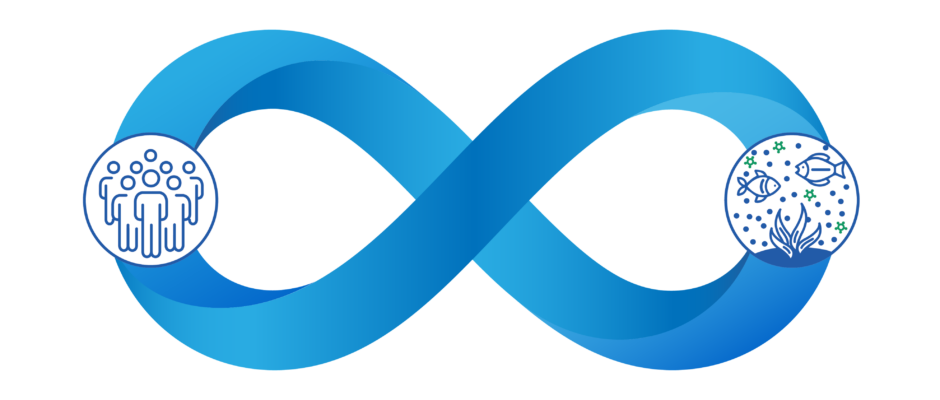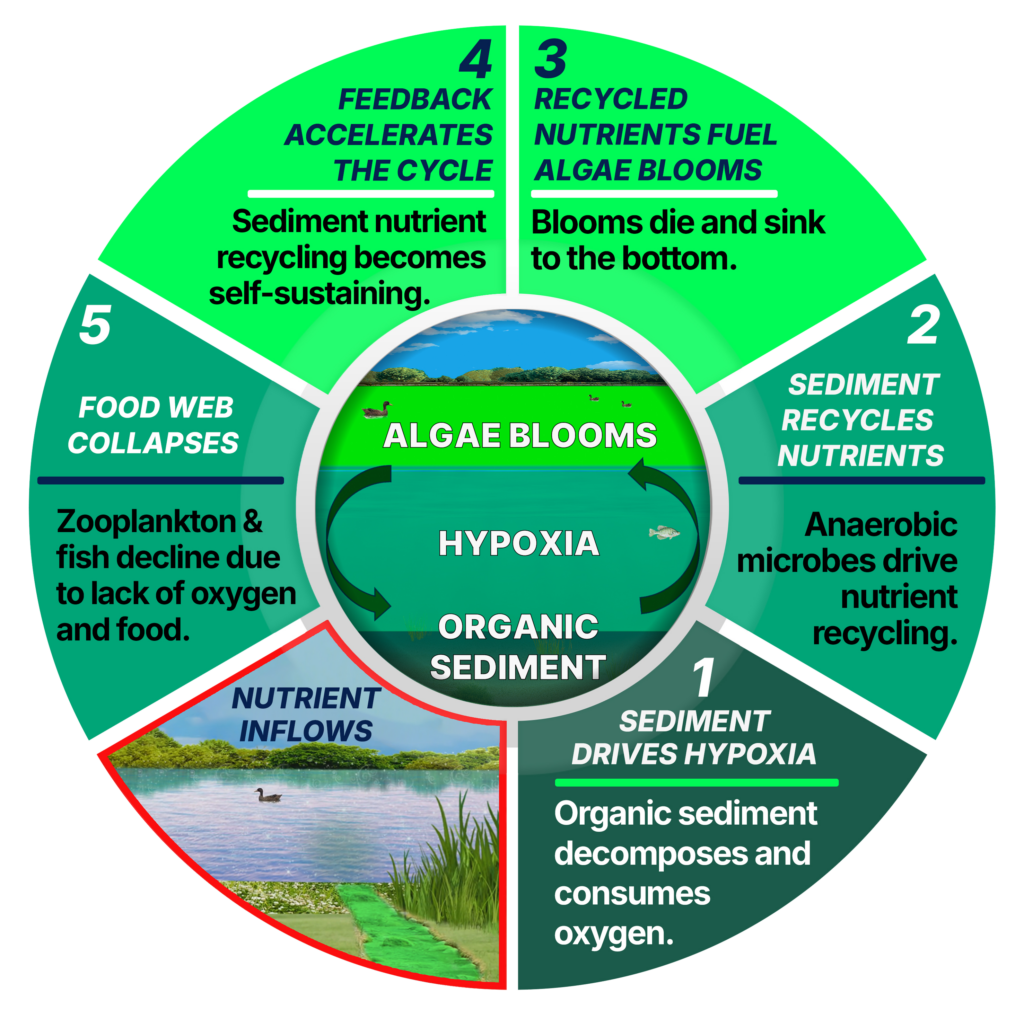
What is Eutrophication?
The Delicate Balance of Nature
For centuries, nature has maintained the delicate balance of nutrient management to maintain water quality and prevent eutrophication by efficiently clearing nutrients through the food web.
Nutrients that flow into a lake are taken up to produce “primary biomass” – algae and aquatic plants. They are consumed by the animal life in the food web which form a network or web of predator/prey hierarchies. Many of those creatures are eventually consumed by land-based predators such as reptiles, birds, mammals and fishermen, so the biomass and nutrients are cleared out of the water.
This natural process is the basis of the “Renewable Water” model – which is how a finite amount of water becomes an infinite, sustainable supply of clean, usable water.

However, since the Industrial Revolution, increasing nutrient inflows from man-made infrastructure and wastewater, as well as the growth in crop and livestock food production, have disrupted this equilibrium.
Rivers, lakes, and reservoirs which should be cherished Natural Water Infrastructure assets are being degraded by eutrophication and becoming liabilities.
How does Eutrophication Happen?
This shift is driven by a complex interaction and feedback loop that begins with excessive nutrient inflows. These nutrients are absorbed by algae, which convert them into biomass that eventually dies and sinks to the sediment.
This shift is driven by a complex interaction and feedback
Decomposition Drives Hypoxia: as the algae decomposes in the sediment, oxygen is consumed causing hypoxia.
Sediment recycles nutrients: Decomposed biomass releases nutrients that recycle back into the water.
Algae blooms: recycled nutrients fuel algae blooms and invasive weed growth.
Feedback A self-sustaining cycle is established; more algae capture more nutrient inflows and deposits them in the sediment where oxygen depletion creates more hypoxia and more nutrient recycling.
Food Web Collapse Habitat Feedback: Hypoxia means animals in the food web, such as benthic zooplankton and fish, suffocate and starve to death. So there is less and less nutrient clearance via the food web.

In such conditions, toxic cyanobacteria outcompete beneficial algae and eventually toxic HABs occur.
Why are Invasive Weeds important?
Invasive weeds also play a significant role in eutrophication. They take root in the nutrient-rich organic sediment. When they die off, the weeds decompose, further depleting oxygen and increasing sediment nutrient stockpiles.
This creates an ideal environment for toxic cyanobacteria to take hold and dominate the aquatic ecosystem, resulting in harmful algae blooms or HABs.
What is a Healthy Aquatic Food Web?
In a healthy aquatic food web, plant life and algae use nutrients to produce primary biomass, which supports progressive levels of animal life. Zooplankton consume algae and produce animal biomass that is then consumed by higher-order animals in the food web.
Eventually, nutrients are cleared from the ecosystem when predators like reptiles, otters, geese, other birds of prey, and fishermen remove biomass by removing prey animals, such as crustaceans and fish.
How does the Food Web Collapse?
Animals can no longer consume all the short-lived plant life before it die and sinks to the bottom, decomposing and producing nutrient rich stockpiles in the sediment. This process depletes oxygen at the base of the water column, creating anoxic conditions in which oxygen-respiring animal life cannot survive.
However, when nutrient overloads fuel rapid blooms of invasive weeds, algae, and cyanobacteria, the food web becomes overwhelmed.
As a result, invasive weeds, algae, and cyanobacteria gain a competitive advantage, taking over in successive stages and marginalizing animal life.
How do you Target The Root Causes Of Eutrophication?
To address eutrophication effectively, the root causes must be recognized and targeted with specific ACTIONs
By focusing on these three key aspects – Reoxygenation, Bio-Dredging, and Restoring Ecosystem Balance and the food web – we can reverse eutrophication, eliminate muck and the invasive weeds they promote, control excess algae, prevent HABs, and restore ecological balance. This holistic approach is the key to saving our precious water resources and preserving the cherished Lake Lifestyle for generations to come.
CLEAN-FLO
827 Lincoln Avenue, Suite 1
West Chester, PA 19380
Phone: 800-328-6656
E: contact@clean-flo.com

